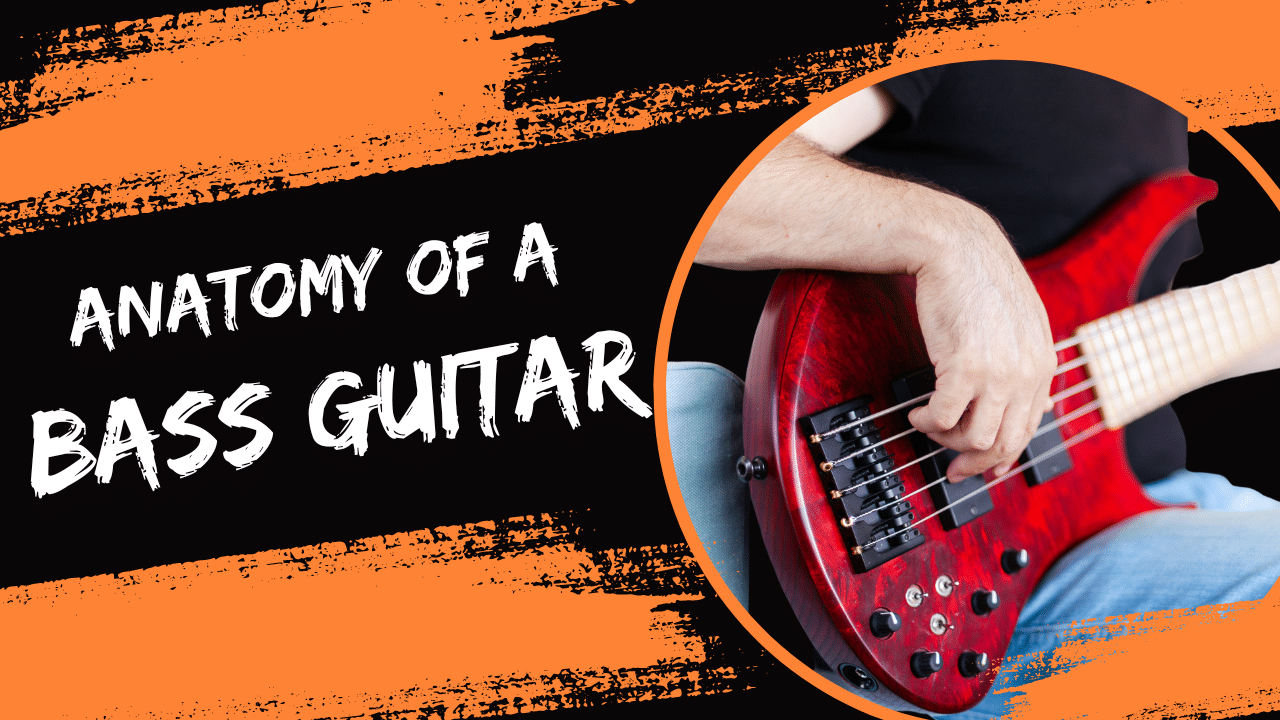Introduction
Let’s talk about everyone’s favourite instrument, BASS. Is it just a big brother to your normal guitar with fewer strings? The answer is Both Yes and No. This blog is about Bass Guitar and Bass Guitar Anatomy.
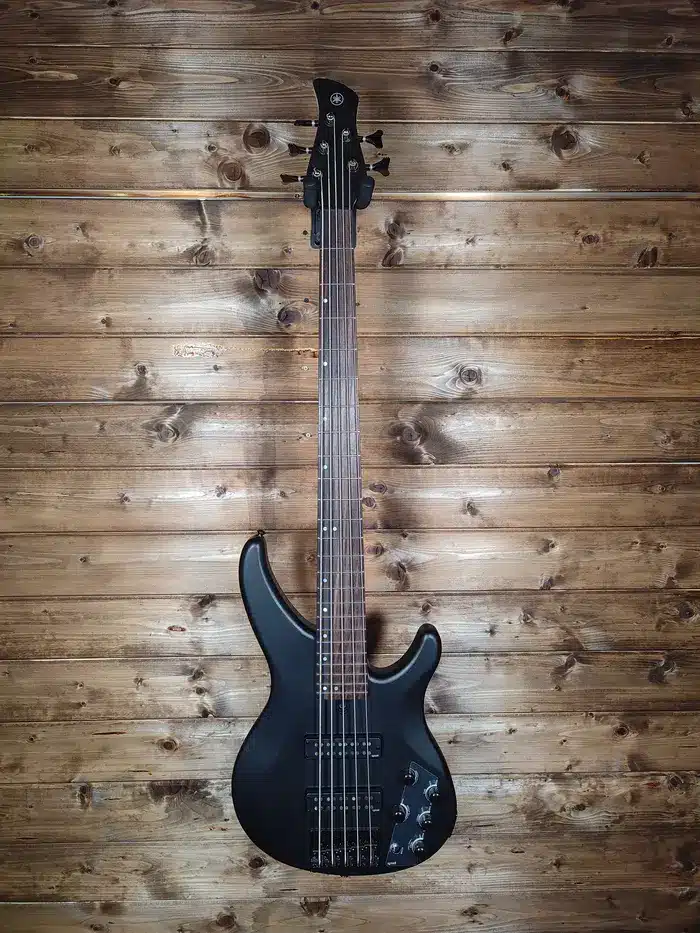
The bass guitar is a fundamental component of modern music. Along with the percussion and drums the bass guitar is something which can make any listener groove and dance. There is a famous quote which talks about the bass’s importance, it says, you can’t hear the bass but you will notice it as soon as it is gone.

The bass is the heartbeat of the band. It’s what keeps us all in time and moving togethers.
Anatomy of Bass Guitar
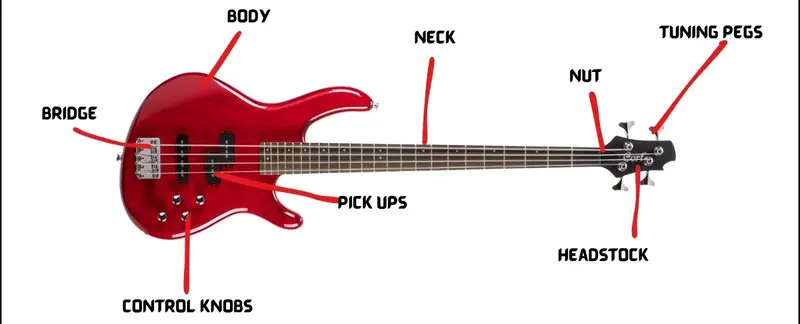
Let’s talk about Bass guitar Anatomy to see what makes it so unique.
If you look at any bass guitar, acoustic or electric it is made up of 3 main sections; the head, the neck and the body.
The electric bass just like any electric guitar will contain more parts to function, for example the guitar pickups, pickup selectors, tone knobs, volume knobs and more.
Let’s look into each part in details:
The Body
It’s self-explanatory, imagine the body of a bass guitar as its home base. It’s the big chunky part that you hold onto while you play and where you pick the strings from your right hand. Depending on whether it is electric or acoustic, some bass guitars have a solid body and some may have a hollow body. The shape can vary from smooth and curved to sharp and jagged, but they all serve the same purpose – to hold all the important pieces together.
The Neck
Imagine the bass guitar’s neck as a long, thin arm. Most of the work is done by your left hand here, which moves up and down to fret or press the notes. The fretboard, which is located on the front side of the neck, functions as a kind of musical route map. The frets are the metal bars that assist you make your way around and strike the correct notes.
The Headstock
The third major part of the bass guitar is the headstock. The headstock is located at the very top of the neck. This is where you tune your instrument. At the top of the headstock are tuning pegs that you turn to tighten or loosen the guitar strings. The headstock can also be shaped differently to complement the structure or style of the bass guitar.
The Tuning Pegs
These tiny silver knobs are located at the headstock of your bass. Twist them to tighten or loosen the strings until they are just right. Each string has its own tuning peg so you can fine-tune them individually.
The Nut
The nut is a small strip of material located right where the neck meets the headstock. It can be made of plastic or bone. Its job is to keep the bass’s strings in place and evenly spaced as they descend toward the lower part of the neck. Think of it as a traffic cop, making sure everything is in order.
The Bridge
If a nut is like a traffic cop, a bridge is like a strong bridge over a river. This is the attachment point for the strings at the other end of the bass guitar. The strings go across the bridge, which can be fixed or adjusted depending on which bass guitar you have. This helps transfer the vibrations from the strings to the body of the bass guitar.
The Pickups
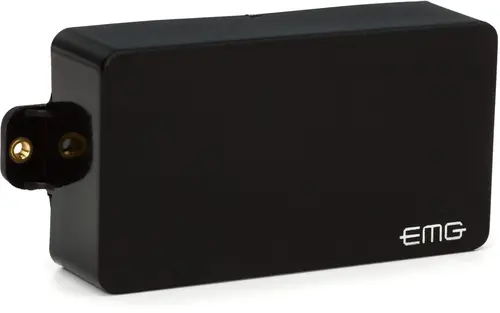
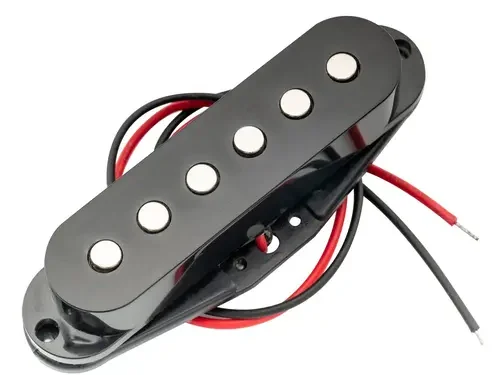
Now we’re getting into the electric side of things. Pickups are the little microphone-like device that listen to the vibrations of the strings and turn them into electrical signals. These signals then travel through wires to the amplifier.

Did You Know?
The first bass guitar was invented by Paul Tutamarc in the 1930s but it was not until the 1950s that it started gaining popularity after Leo Fender made some tweaks and made a bass guitar named Precision bass.
The amplifier is connected with a quarter inch TRS or TS cable with the Bass, where they get amplified and turned into the sound you hear through the speakers. Without pickups and the amplifier, the electric bass guitar would be pretty quiet as they are solid body guitars and there’s not enough space for the vibrations to convert into loud sound which usually happens in the hollow body guitars.
Types of Pickups
Pickups can be of two types, Active or passive. The active pickups require external power sources such as batteries to function whereas passive pickups don’t require the power source, the main difference between these two is the tone or sound they capture and deliver. The other terms you might hear are single coil pickups or humbuckers.
Single coils were the original pickups that were created with the first electric guitars and humbuckers were created later combining two magnets together to reduce the electric ‘hum’ or ‘buzz’ sound, the sound difference is quite noticeable. Different players prefer different Pickup styles.
The Control knobs
On most electric bass guitars, you’ll find the knobs and/or switches on the body of the bass, near the pickups. These are the control knobs which let you tweak the sound to your liking. You might have knobs for adjusting the volume, the tone, or even switching between different pickup configurations. This is the easiest way to shape your instrument’s tone. It’s like having your own mixing board built right into your instrument.
Strings
Last but definitely not least, we have the strings themselves. They are the most important part of your bass guitar you can say. Most bass guitars have four strings, tuned to E-A-D-G, but some have five or even six strings for extra range. They’re usually made of metal and are a lot thicker than your regular guitar’s strings.
Quick Tip: Always replace your strings after a few weeks/months of use, depending on the amount of your playing. Newer strings will always produce a more clear, vibrant and harmonically rich sound.
So, there you have it – the anatomy of a bass guitar, broken down into bite-sized pieces. Remember, learning to play the bass is all about practice and patience. So, grab your bass, crank up the amp, and let the fun begin!
Any Guitar player should know about all the names of the Guitar Strings.
FAQs
List out the main parts of a Bass guitar?
Mention one difference between Bass Guitar and Acoustic Guitar.
Mention one difference between Bass Guitar and Acoustic Guitar?
The Bass guitar has 4 to 6 strings whereas the Acoustic guitar has 6 or 12 strings.
Label the parts of a Bass Guitar with Diagram?
The answer to this question is at the blog above.
Mention one difference between Bass guitar and Electric Guitar?
The Bass Guitar is bigger in structure than an electric guitar and also has thicker strings.
How does a pickup help in the functioning of a Bass guitar?
Pickups are the little microphone-like device that listen to the vibrations of the strings and turn them into electrical signals. These signals then travel through wires to the amplifier.

